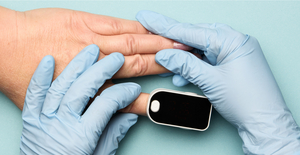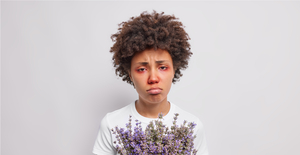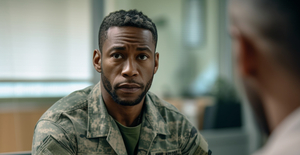RSV Testing
You’ve likely heard a lot about RSV in the news due to a surge in cases across the United States. For those with young children, this is concerning. Respiratory syncytial virus (RSV) is an infection that affects the respiratory tract. Cases tend to trend upward during the winter months, when most respiratory viruses increase. Because there are usually many respiratory viruses circulating at once, it is hard to distinguish one from another. Fortunately, there are accurate testing options that help! Here’s what you should know about when to get tested or have your child tested for RSV.
What is RSV testing?
There are different types of RSV tests available to detect the virus in the respiratory system. The most commonly used test according to Medline Plus is the rapid RSV antigen test. This test uses a fluid sample collected from the nose to screen for antigens (proteins) from the RSV virus. Similar to other respiratory illnesses, the body will produce antigens as an immune response when infected. The rapid antigen tests usually provide results quickly—within an hour or less.
The second type of RSV test is the molecular test, otherwise known as a polymerase chain reaction (RT-PCR) test. You've probably heard of PCR tests for COVID-19 testing. These PCR tests screen for any genetic material from the virus that may be present in the body. Medline Plus notes that these tests are a more accurate option when compared to antigen tests because PCR tests can detect smaller amounts of virus present in the body. The RT-PCR tests are preferred for people like young children and the elderly, who tend to have less virus present in their nasal cavities. PCR tests usually yield results within about 24 hours. They take longer than antigen testing because the samples are sent to a laboratory for analysis. Some healthcare providers will run both tests for added accuracy.
Who should get an RSV test?
According to the Mayo Clinic, you should get an RSV test if you believe that you have been exposed to RSV and are showing symptoms. Although you may not know if you have been exposed, If you are experiencing symptoms, it is best to talk with your healthcare provider to determine whether testing for RSV is appropriate.
According to the CDC, common symptoms of RSV include:
- Fever above 100 degrees Fahrenheit
- Cough
- Wheezing
- Runny nose
- Sneezing more than usual
- Headache
- Difficulty breathing or breathing very quickly
- Symptoms in infants also include: crankiness/crying, irritability, less movement, lack of appetite, pauses or changes in breathing (this indicates a serious case)
For many older children and adults, the CDC notes that RSV symptoms are similar to the common cold, and they recover at home without ever getting tested. This makes it difficult for parents of younger children to know whether their child has been exposed. Because young children and the elderly are at a higher risk of experiencing a severe case of RSV, a healthcare practitioner may recommend more diligent screenings, testing, and precautions.
Those who are at the greatest risk of complications from RSV, according to the CDC include:
- The elderly
- Those with a weakened immune system
- Infants and children under the age of five
- Pregnant women
- Individuals with chronic illnesses (like asthma, diabetes, and heart disease)
- Individuals who are already sick or hospitalized with another illness
Like other respiratory viruses, the CDC notes that RSV has the potential to cause serious complications like pneumonia or bronchiolitis., Pneumonia is an infection of the lungs that can have serious consequences if not properly diagnosed and treated. Bronchiolitis is an inflammation of the small airways in infants and young children.. Both conditions can cause serious complications if left untreated. For this reason, it’s important to take precautions against the development of RSV if possible. Though there is a vaccine in development, there is not one approved and available yet. So avoiding large, crowded areas during RSV season is the best precaution for people who are at higher risk of complications.
How to get an RSV test
RSV tests are available throughout the country; however, access will vary depending on your location, and if cases are particularly high there may be a shortage of tests available. If you are interested in being tested for RSV, start by reaching out to a healthcare provider who can order the test or guide you to a testing location. At this time, RSV tests are not typically available via walk-in clinics, but are often done in a more clinical setting, such as a hospital or doctor’s office.
At-home RSV tests are also becoming more widely available due to the COVID-19 pandemic, and instructions are included in these tests for how to perform them. Once the test is completed at home, you mail the sample to the laboratory for testing. It is best to do this on a weekday, as the sample must be shipped on the same day that you collect it. These samples are typically shipped via FedEx (for faster delivery), and results become available via a Labcorp portal around one to two days after your specimen arrives at the lab.
The cost of RSV tests may not be covered by insurance, and the price will usually depend on the brand and type of test. The cost of most tests averages anywhere from $10 to $45 per test. This rate will vary depending on the type of test and your insurance coverage. Check with your local pharmacy and/or healthcare provider about the cost of testing in your area.
What to expect during an RSV test
If you haven’t been tested for RSV before, it is helpful to understand the process. First, know that you don’t need to take any steps or make considerations before going for or taking a test.
During the test, a respiratory sample is needed. This is typically easily obtained with a sample of nasal secretions. Most commonly, the RSV test uses a swab of the nasal cavity to obtain a sample of secretions. Alternatively, a sample can be obtained from the nasal cavity through the wash and aspirate technique, which includes a saline solution that is used to flush the nasal cavity, followed by a healthcare provider suctioning out the saline solution using gentle suction methods. This second way is the most common way to collect a sample for an RSV test in infants and young children.
While blood tests are not typically used to diagnose a current RSV infection, a blood test can show a recent infection.
According to the FDA, any people report feeling a gag and/or a tickling sensation during an RSV test because of the sensitivity of the nasal cavity. These sensations are usually brief and stop as soon as the nasal swab is over.
Testing positive for RSV
While most people recover from RSV within a week or two according to the CDC, you should still take precautions to avoid getting other people sick.
If you test positive for RSV (or if you are experiencing symptoms after a known exposure), follow the CDC guidelines for safely isolating yourself until you recover.
The CDC's current guidelines recommend that you:
- Isolate and take precautions to prevent spreading the sickness to others.
- Wear a facemask if needing to go into public while sick.
- Monitor your symptoms and seek medical care, if needed.
- Manage fever and pain with over-the-counter medications.
- Up your fluid intake to prevent dehydration.
- Consult your healthcare provider for guidance on how to help a sick child.
- Wash your hands often while sick and while recovering.
Find RSV Testing near you
- Alabama
- Alaska
- Arizona
- Arkansas
- California
- Colorado
- Connecticut
- Delaware
- Florida
- Georgia
- Hawaii
- Idaho
- Illinois
- Indiana
- Iowa
- Kansas
- Kentucky
- Louisiana
- Maine
- Maryland
- Massachusetts
- Michigan
- Minnesota
- Mississippi
- Missouri
- Montana
- Nebraska
- Nevada
- New Hampshire
- New Jersey
- New Mexico
- New York
- North Carolina
- North Dakota
- Ohio
- Oklahoma
- Oregon
- Pennsylvania
- Rhode Island
- South Carolina
- South Dakota
- Tennessee
- Texas
- Utah
- Vermont
- Virginia
- Washington
- Washington DC
- West Virginia
- Wisconsin
- Wyoming
RSV Testing FAQs
How is RSV spread?
RSV is a respiratory illness that is spread when an infected person coughs or sneezes, and/or if you have direct contact with the virus (via doorknob, etc.).
How long does RSV last?
According to the CDC, RSV usually lasts a week or two, and people are typically contagious for about three to eight days. This will vary from person to person.
How do I protect myself from RSV?
The CDC recommends that you cover your coughs and sneezes, wash your hands thoroughly, avoid close contact with anyone who may be infected (kissing, sharing food, etc.), and clean surfaces regularly.
How common is RSV?
RSV is common around the world, with most outbreaks occurring from late Fall through early Spring, according to the CDC. Outbreaks last an average of about five months.
Is there a vaccine against RSV?
There is no vaccine for RSV that is available to the public. Because RSV can be serious for infants and young children, a vaccine is under development, according to the FDA.
Are children more likely to get infected with RSV?
Yes, there has been an uptick in the number of children contracting RSV, according to CDC data. It is reported that most children will have been infected with RSV by their second birthday.
When should I seek more serious medical attention?
If you or your child is having difficulty breathing or is turning blue (on the skin or fingernails), seek immediate medical attention right away.
Solv has strict sourcing guidelines and relies on peer-reviewed studies, academic research institutions, and medical associations. We avoid using tertiary references.
Everyday Healthcare, Simplified
Expert advice to help you live your best life

 LinkedIn
LinkedIn



